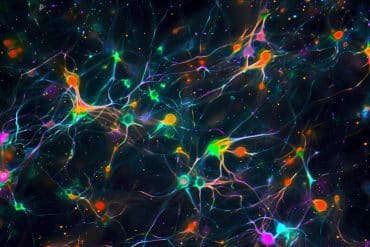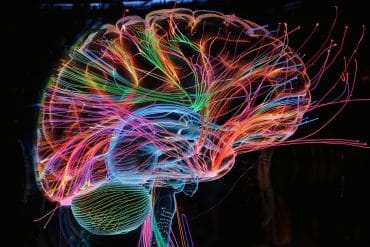Summary: Researchers shed light on key proteins that play roles in controlling epilepsy and anxiety.
Source: UNLV.
New therapies could be on the horizon for people living with epilepsy or anxiety, thanks to a breakthrough discovery by UNLV, Tufts University School of Medicine, and an international team of researchers studying how proteins interact to control the firing of brain cells.
The study, published Tuesday in Nature Communications, provides new insight into ways to regulate a specialized “compartment” of cells in the brain that controls their signaling. If scientists and doctors can influence that compartment, they can control the firing of brain cells, which may in turn stop or prevent seizures, among other things.
UNLV neuroscientist and lead author Rochelle Hines said controlling patterns of activity are very important to the brain’s function.
“If we can better understand how the brain patterns activity, we can understand how it might go wrong in a disorder like epilepsy, where brain activity becomes uncontrolled,” Hines said. “And if we can understand what is important for this control, we can come up with better strategies for treating and improving the quality of life for people with epileptic seizures and maybe other types of disorders as well, such as anxiety or sleep disorders.”

The six-year project moved one step closer to answering decades-old questions about brain wave control, by quantitatively defining how two key proteins — the GABAA receptor a2 subunit and collybistin — interact. When the interaction was disrupted in rodent models, EEG tests showed brain waves moving out of control, mimicking patterns seen in humans with epilepsy and anxiety.
“That’s the piece that could potentially change textbooks: Previously, we had questions about how these pieces fit together and thought that maybe a group of three or more proteins interacted,” Hines said. “But our team’s research strongly suggests that there’s a very specific interaction between two of them, and this has implications for how neuroscientists might be able to regulate this area.”
Coordinating the research effort was Stephen Moss, professor of neuroscience at Tufts and director of the AstraZeneca Laboratory for Basic and Translational Neuroscience in Boston. Moss said that the study results should stimulate the development of drugs that target the GABAA receptor a2 subunit as new, more effective treatments for epilepsy.
Hines and her husband, UNLV psychology professor Dustin Hines, collaborated on the project with researchers from Tufts University School of Medicine in Boston USA, where Rochelle was a post-doctoral fellow with Moss; and also the University of Wurzburg in Germany; University of Turin in Italy; University of Zurich in Switzerland; University College London in the UK; and the IMED Biotech Unit of AstraZeneca, Boston USA.
Funding: The research was supported by grants from the National Institutes of Health, Deutsche Forschungsgemeinschaft, Canadian Institutes of Health Research, and the German Excellence Initiative.
Source: Keyonna Summers – UNLV
Publisher: Organized by NeuroscienceNews.com.
Image Source: NeuroscienceNews.com image is adapted from the UNLV news release.
Original Research: Open access research for “Developmental seizures and mortality result from reducing GABAA receptor α2-subunit interaction with collybistin” by Rochelle M. Hines, Hans Michael Maric, Dustin J. Hines, Amit Modgil, Patrizia Panzanelli, Yasuko Nakamura, Anna J. Nathanson, Alan Cross, Tarek Deeb, Nicholas J. Brandon, Paul Davies, Jean-Marc Fritschy, Hermann Schindelin & Stephen J. Moss in Nature Communications. Published August 2018.
doi:10.1038/s41467-018-05481-1
[cbtabs][cbtab title=”MLA”]UNLV”Brain Proteins and Patterns Reveal Clues to Understanding Epilepsy.” NeuroscienceNews. NeuroscienceNews, 10 August 2018.
<https://neurosciencenews.com/pattern-protein-epilepsy-9687/>.[/cbtab][cbtab title=”APA”]UNLV(2018, August 10). Brain Proteins and Patterns Reveal Clues to Understanding Epilepsy. NeuroscienceNews. Retrieved August 10, 2018 from https://neurosciencenews.com/pattern-protein-epilepsy-9687/[/cbtab][cbtab title=”Chicago”]UNLV”Brain Proteins and Patterns Reveal Clues to Understanding Epilepsy.” https://neurosciencenews.com/pattern-protein-epilepsy-9687/ (accessed August 10, 2018).[/cbtab][/cbtabs]
Abstract
Developmental seizures and mortality result from reducing GABAA receptor α2-subunit interaction with collybistin
Fast inhibitory synaptic transmission is mediated by γ-aminobutyric acid type A receptors (GABAARs) that are enriched at functionally diverse synapses via mechanisms that remain unclear. Using isothermal titration calorimetry and complementary methods we demonstrate an exclusive low micromolar binding of collybistin to the α2-subunit of GABAARs. To explore the biological relevance of collybistin-α2-subunit selectivity, we generate mice with a mutation in the α2-subunit-collybistin binding region (Gabra2-1). The mutation results in loss of a distinct subset of inhibitory synapses and decreased amplitude of inhibitory synaptic currents. Gabra2–1 mice have a striking phenotype characterized by increased susceptibility to seizures and early mortality. Surviving Gabra2-1 mice show anxiety and elevations in electroencephalogram δ power, which are ameliorated by treatment with the α2/α3-selective positive modulator, AZD7325. Taken together, our results demonstrate an α2-subunit selective binding of collybistin, which plays a key role in patterned brain activity, particularly during development.






